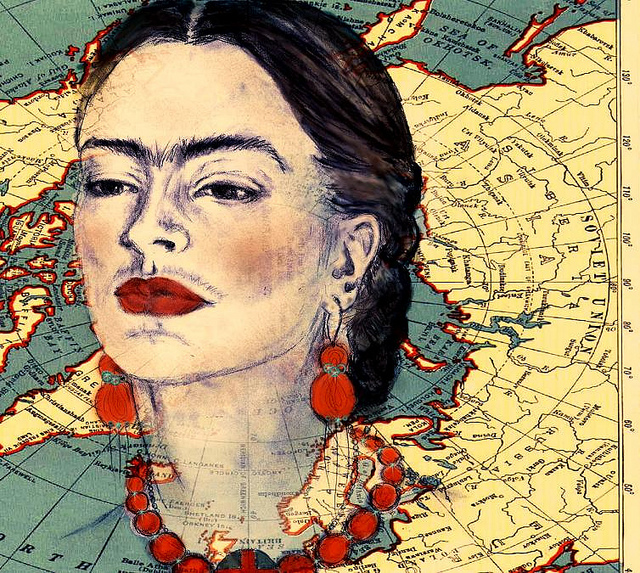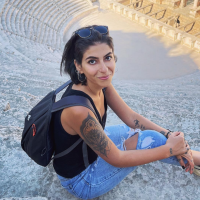We know Frida Kahlo “the artist.”
She was the woman who painted brutal self-portraits, and she was also a wife who endured miscarriages and a broken marriage. Most importantly, she was the patient who tolerated dire, physical pain and underwent more than 35 operations throughout her life.
However—beneath the painter, the wife and the patient, there was a rebel, a feminist and a revolutionary.
My obsession with her arose when I learned about her public persona. She fed the rebel and the feminist within me that emerged at the beginning of my high school years.
Her art is of major prominence for me—her paintings tackle infertility, gender equality, miscarriages, heartbreak and sickness. But what thoroughly fascinated me about Frida was that she lived exactly how she wanted.
Spotting originality in the world is often rare. Our culture is constantly assaulting our thoughts and beliefs—and gradually, we are adopting what the media perceives as desirable.
Consequently, other people’s opinions are overshadowing our true identity. We perceive society as a separate part from ourselves, disregarding that we “are” society. That said, when we seek transformation in the societal structure, we need to understand that change starts with us. And this is precisely what Frida did in her own environment (not only in Mexico, but in Europe too)—she made a change through being fiercely herself.
We don’t have to be tequila drinkers or stay in a broken partnership like she did. But accepting who we are and being original are essential lessons to learn from Kahlo. Like Frida, we must peel away the layers that advertising, the media and the Hollywood industry have weaved into our minds, and find our authentic, unique identity.
Kahlo transformed the word “different” to “normal.” To this day, her work and her legacy attracts artists, as well as diverse groups such as feminists, gays, lesbians, communists, patients, the emotionally hurt and the politically active.
I usually speak of Frida as “the victim of suffering.” Today, I speak of Frida “the rebel.”
Here are five reasons why Frida is an icon of feminism and freedom:
1. Public bisexuality. Frida took pride in her sexuality. She liked to have both women and men in her bed. What primarily prompted her to have many extramarital affairs was Diego’s infidelity and his incapability of remaining sexually loyal to her. Eventually, the couple ended up having an open marriage.
Frida openly made love to the women with whom Diego went to bed—such as the American actress, Paulette Goddard.
Diego didn’t have a problem with Frida broadening her sexual experiences with women, but he got outrageously jealous of the men she slept with—as Leon Trotsky.
2. Defying the “female beauty” standards. Frida didn’t care to fit with the norm. She kept her “masculine” features untouched—she didn’t pluck her eyebrows, her mustaches or shave her armpit hair. It is said that she also darkened her eyebrows with a black pencil.
She created her own individual style, especially through her clothing. At the time, when women were keen on wearing tight dresses, Frida wore long skirts and loose shirts with vivid patterns. She braided fabrics into her hair and wore accessories that created a fashion frenzy across the world.
Although Frida defied the standards of beauty in society, she’s still considered as one of the most attractive women.
3. Defying gender stereotypes. Women had few rights during the 1900s. At a time when men were seen as the dominant sex, it was expected of women to be housewives. Frida attended a co-educational school, something that was highly unusual in those days.
Isabel Alcantara wrote, in her book about Frida, “There were only about five girls to 300 boys at the school, and Matilde (Frida’s mother) was outraged at the thought that one of them was to be her daughter.”
Unlike other girls at school, Frida wore her hair parted and pulled back. She also appeared for family photos in men’s clothes.
Not only did she dress like men did, but she also challenged men in drinking tequila. She continued drinking throughout her lifetime, despite her doctor’s firm disapproval.
4. Exploring intimate female experiences in her paintings. Again, during the 1900s, female experiences were private—but Frida publicized miscarriages, pregnancy, menstruation, operations, breastfeeding, infertility and sexual organs. Her paintings may seem disturbing at first, but they embody the challenges of being a woman.
She painted her self in a surrealist method that has shocked great painters across the world. Andre Breton, the French founder of surrealism, wrote of her work: “I must add that no other painting is so essentially feminine, for she fluctuates between wide-eyed innocence and sheer depravity in order to appear as seductive as possible.”
Her life and her artwork were directly interwoven with one another. Kahlo takes the viewer inside a woman’s mind and heart, and let us examine the fears, passion and suffering that secretly resides within us.
5. Politically active. Although she was born in Mexico, a country of tradition and Catholicism, Frida was an atheist and a proud communist. Despite her frequent health issues, Frida was an active member of the Communist party. She believed that only through Communism can we become human.
She was also a Mexican patriot to a fault. She changed the year of her birth, from 1907 to 1910, to coincide with the Mexican revolution.
Kahlo had strong political convictions that were inspired by Marxist ideology. She wrote in her diary: “I’m convinced of my disagreement with the counterrevolution—imperialism, fascism, religion, stupidity, capitalism and the whole gamut of bourgeois tricks. I wish to cooperate with the revolution in transforming the world into a classless one, so that we can attain a better rhythm for the oppressed classes.”
Leon Trotsky, the exiled Marxist revolutionary with whom she had an affair, lived with her and Diego at La Casa Azul for two years. She also wrote about him: “I love Marx, Engels, Lenin, Stalin and Mao Tse as pillars of the new Communist world. Since Trotsky came to Mexico, I have understood his error. I was never a Trotskyist.”
.
**Sources:
Frida Kahlo and Diego Rivera, Isabel Alcántara, Sandra Egnolff
~
Author: Elyane Youssef
Image: Flickr/Gloria Martin
Editor: Yoli Ramazzina












Read 2 comments and reply